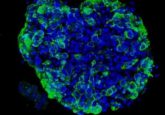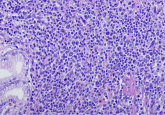The epigenetics of culture and ethnicity

An epigenome-wide study shows that many DNA methylation differences across ethnic groups cannot be explained by shared genetic ancestry alone.

The likelihood of developing certain diseases can vary significantly across different racial and ethnic groups. But in recent years, the biomedical research community has attempted to avoid social and political controversy by grouping individuals by genetic ancestry instead of race and ethnicity. Now, a study published in eLife suggests that this practice may be ignoring the potentially significant contribution of environmental factors to health disparities across different groups of people.
“This study is important because it quantifies how much of the association between race and ethnicity and a biological process like DNA methylation is due to genetically defined ancestry and how much is due to other factors, such as shared environmental, social, and cultural factors,” said first author Joshua Galanter, a scientist at Genentech.
Race and ethnicity are social constructs that encompass both shared genetic ancestry and environmental exposures. Focusing only on the contribution of shared genetic ancestry when studying health disparities across racial and ethnic groups, may miss the potentially important role of social and environmental factors such as air pollution, tobacco smoke, poverty, and inadequate access to medical services, which have all contributed to disease outcomes in certain populations.
Methylation is an ideal biological process to look at when studying how race and ethnicity contribute to a person’s susceptibility to disease. This epigenetic modification, which alters the activity of genes through the addition of methyl groups to DNA strands, is controlled by both genetic and environmental factors. Moreover, changes in DNA methylation patterns have been associated with complex diseases, including various cancers, cardiovascular disease, obesity, diabetes, autoimmune and inflammatory diseases, and neurodegenerative diseases.
To examine the association between methylation and ethnicity, Galanter and his collaborators conducted an epigenome-wide study in which they typed more than 450,000 CpG sites in whole-blood samples from 573 Hispanic individuals who also had high-density genotype data.
“We show that across the genome, genetic ancestry can account for about three quarters of the association between ethnicity and methylation,” Galanter said. “However, that leaves a significant effect that cannot be accounted for by ancestry and is probably caused by other, non-genetic factors, such as shared social and cultural values, and environmental exposures that are independent of ancestry.”
In addition, methylation patterns at DNA locations known to be affected by environmental factors, such as exposure to tobacco in the womb, diesel exhaust particles, and psychosocial stress, were disproportionately likely to be methylated differently in different subgroups.
The findings suggest that the inclusion of relevant social and environmental exposures in studies of methylation may help elucidate racial and ethnic disparities in disease prevalence, health outcomes, and therapeutic response. Moreover, it may be possible in the future to use genome-wide methylation analysis as a biomarker of environmental exposures affecting certain populations.
According to Galanter, the next step is to actually apply the findings to disease processes, particularly those associated with significant health disparities. “For example, asthma is a disease that is much more common in Puerto Ricans than in Mexicans, even though they are both classified as Latinos,” he said. “A number of groups have found genetic risk factors for the disease, but so far, we haven’t been able to explain the difference in risk between these groups.”





